

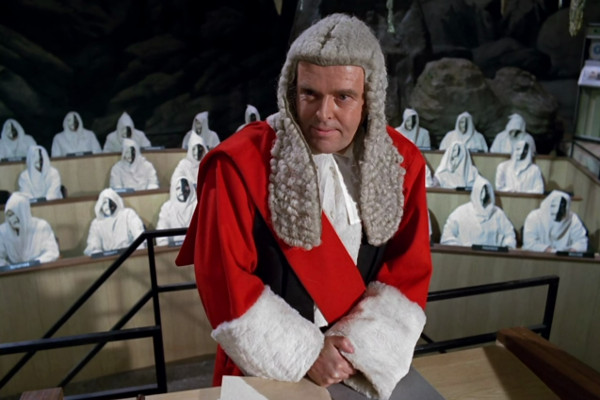
It's arguable whether or not Fall Out jars with the rest of the series: certainly, while the first 16 episodes clearly had layers of metaphor and social commentary that can't be denied, Fall Out abandons the backbone of the narrative almost entirely, pushing the programme into full allegory. George Markstein regarded the finale as pantomimic and self-indulgent, while Patrick admitted he hadn't got a clue who No.1 actually was until he was a third into writing the episode. The Prisoner was a series rushed into production before all the scripts were completed, and, while it's often regarded highly as "concept television" and "art", the uncertain nature of events do show when it's watched in rapid succession.
It's perhaps this full embracement of the show's pop art aesthetic that inspired so many musicians to homage the series since it ended, from a wide range of genres, including Iron Maiden, Howard Jones and the Manic Street Preachers. Perhaps most interesting are the bands that actually referenced the series in their videos, such as Supergrass's "Alright" and XTC's "The Man Who Sailed Around His Soul", both of which were filmed in Portmerion with props and costumes, the latter even using clips from the programme. Probably the most notable of all was the 1982 single "See Those Eyes" from the band Altered Images, which once again saw Portmerion filming and props from the series, but also saw lead singer Clare Grogan acting out the opening moments from the title sequence, complete with gas through a keyhole.
Fall Out might be a truly great episode of The Prisoner, or it might be the indulgence that Markstein claimed it is... it might even be both at the same time. It's the wrong way to end a series, and so, in effect, becomes the right way. Having a spy adventure/SF hybrid series conclude as a surrealist musical was a huge left-field decision, and one which, with its impenetrable, absurdist twists, left TV audiences enraged. Its mere existence ensures that the series as a whole has become a work to be debated ever since.
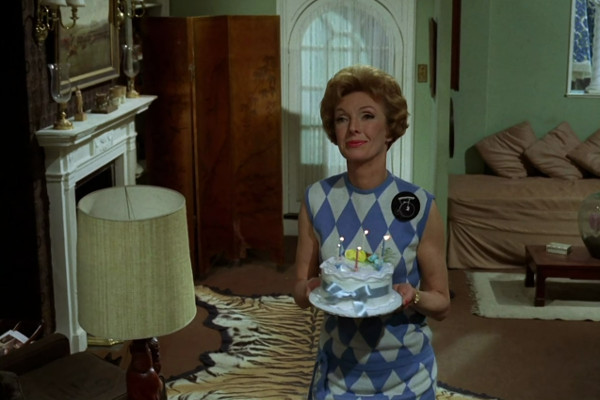
Watched in sequence, Many Happy Returns is a staggeringly predictable episode of The Prisoner, though may not have seemed so at the time. Produced thirteenth (though always scheduled to air before Once Upon A Time), George Markstein expressed his belief that the series should have continued for a second season of thirteen episodes, probably based outside the Village. Whether such a decision would have worked is entirely open to question, as in the end event, Markstein left after this one was made and the entire programme was wrapped up with four more episodes.
What makes this one rate so highly is not just the excellent production, featuring a return to Portmerion filming, nor the slightly experimental tone, where it's almost halfway into the episode before a word of English is spoken. It's also the psychological cruelty underpinning the entire venture. No.6 believes the entire Village has been abandoned overnight, and spends almost a month sailing back to England, almost starving and being drowned along the way, only for the machinations of a kindly "stranger" and former colleagues to place him right back in the Village in time for his birthday.
Such a final twist might not have been so staggeringly obvious on first run, where viewers may not have been aware it wasn't the last episode, but do drag the episode down when watched as part of the set, where only the truly incredulous wouldn't have seen that ending coming. But for the most "straight" episode of The Prisoner, where it's more Markstein's spy thriller, rather than McGoohan's SF allegory, what stands out is the abject cruelty involved. No.6 is allowed to think he's escaped, only to find that former friends and a (naïvely) trusted stranger have placed him right back where he started. And all just to mess with him. A spirit-dampening episode, where perhaps only events in Dance of the Dead have shown the Village being more cruel.
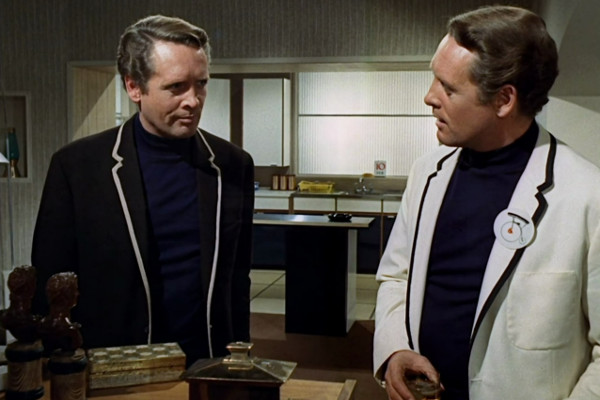
The Prisoner wasn't broadcast in a conventional manner, instead being aired in different orders around each ITV region, sometimes weeks apart. As a result obtaining accurate viewing figures was even more difficult than usual, and estimate audience figures had to be assembled. At its lowest, the series brought in 7.3 million (for Do Not Forsake Me Oh My Darling) and reached its peak here, with a collective 11.7 million ITV viewers tuning in for The Schizoid Man. Altogether the series averaged a healthy 9.62 million viewers each week.
The Prisoner was officially the work of just 11 writers, with Terence Feely (The Girl Who Was Death) turning in this intriguing doppelgänger tale. The split-screen technique was nothing particularly new, having first been devised before 1900, but it works surprisingly well here. With the series released on Blu-Ray in 2009, then the difference in image quality is stunning. The entire series was shot on 35mm film, so it should come as no surprise that the image density achieved is better than ever before. This vast improvement - the opening scenes of Arrival in the shop are particularly good - does, sadly, mean that some of the poorer aspects of the show are also thrown into greater focus. Action scenes involving stuntman Frank Maher doubling for McGoohan are now incredibly obvious, as are some (not all) of the wires pulling along Rover. However, while there are some shaky moments - and the effect used was never seamless, even on VHS - the split screen effect in The Schizoid Man stands up remarkably well.
But what really makes this episode work is the intrigue of its central conceit: with a double brought to the Village as "the real No.6", McGoohan's retired spy finds himself, for once, trying to prove that he very much is a number, spending the episode asserting his right to be regarded as No.6. The episode has its darker touches of psychological conditioning, whereby the turning point and high moment of heroism sees No.6 having to give himself a potentially fatal electric shock in order to break the conditioning.

One of the most striking things about the series is its music. The theme by Ron Grainer is, like the series, full of bombast and urgency, and draws the viewer in. Then there's the incidental music. Three music editors were credited throughout the series, and the music editor of A. B. and C., Eric Mival, was the most prolific, performing the role on a dozen other episodes.
If watched in quick succession, the overuse of some music cues can become a little repetitious, but most of the music composed for the programme, while sometimes intentionally old-fashioned, can reward. A. B. and C. is The Prisoner at its "fight to a bongo riff" best, but the eerie stings, while not unique to here, are engrossing.
What's surprising is how much of the series has music that wasn't especially recorded for the programme, but instead sourced from the Chappell Recorded Music Library, a company that recorded music for purchase. Because of the nature of this arrangement, some of these pieces may as a result be heard elsewhere, such as "September Ballad" from Fall Out also turning up in the Sylvester Stallone movie The Party At Kitty and Stud's.
A. B. and C. contains possibly the most triumphant moment in the entire series, as No.6, aware that his dreams are being manipulated by the Village, turns it all against them for a "dreamy party". The music used for this sequence, "Bienvenue Mister Jones" was recorded by the Jean-Claude Petit Et Son Orchestre in France and written by Jack Arel as part of the Chappell Catalogue. That this piece - which fits so perfectly with the scene - was never specifically recorded for The Prisoner is a matter of some astonishment.
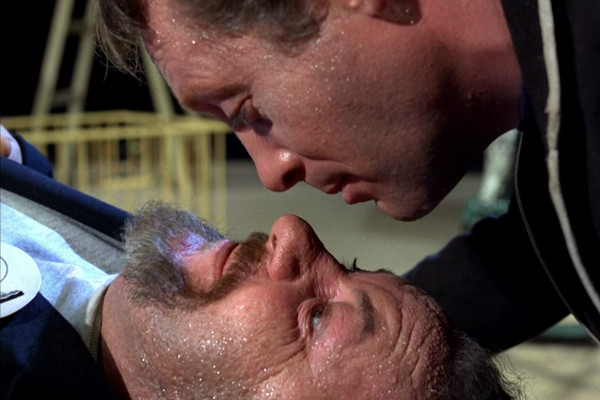
As the series is now older than fifty years in production terms, naturally more and more of the cast involved have sadly passed away. Patrick McGoohan himself died in January 2009, aged 80, making Once Upon A Time the first episode with no surviving cast members.
The episode is generally a two-hander between McGoohan and a returning Leo McKern, with assistance from Angelo Muscat as the enigmatic, silent Butler. Most tragic of all was Peter Swanwick as the Supervisor, who died less than a year after the series wrapped due to heart complications, aged just 46. Two supporting actors (including John Maxim, who played No.86 in deleted scenes) are also sadly long deceased.
There's perhaps a certain undergraduate quality to the script by Patrick McGoohan, with No.6 being taken through the seven stages of man in a psychological battle with McKern's No.2. However, while it may be a little hard to take for audiences not thrilled by nonsense associations and theatrical intensity, it's a piece of television that has the dubious distinction of being lauded by the two stars being pushed towards nervous breakdowns. With McGoohan also directing, the intensity of the situation caused McKern to spend several days off work, reputedly broken, while McGoohan himself had reportedly long been on the verge of psychosis.
Although McGoohan regarded Leo McKern as a "good friend", McKern described Patrick in interviews as a "dreadful bully". Almost every line out of McKern's mouth sounds like the most quotable piece of television ever made, and the uncomfortably intense climax still retains its power.
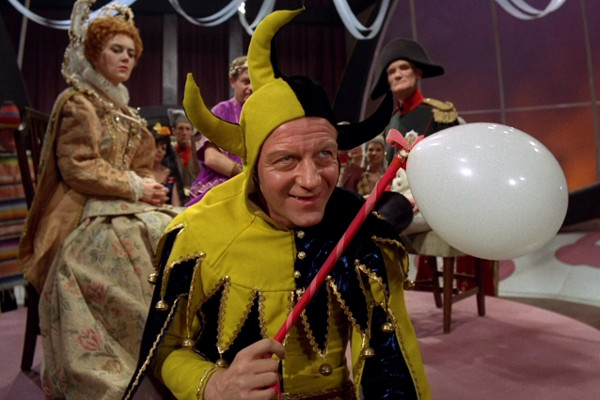
The Prisoner isn't an especially female-orientated show, a world where Patrick McGoohan insisted on "no kissing" in the scripts, and most of the female characters are there to be imperilled, or, more often, to be treacherous and untrustworthy. This particular episode contains No.6's observation on discovering a cat belongs to No.2: "Never trust a woman.... even the four-legged variety." It's a shame, because Dance of the Dead shows just how good the show could have been with more developed female characters... even though Mary Morris's superb No.2 was originally written as a man, before Trevor Howard dropped out.
One of the big debates surrounding the series is what order it should be watched in. The opening episode and the final two-parter aren't up for debate, but most of what came in between was broadcast as a result of networks demanding completed product, rather than any logical, intended order. Many different episode orders are suggested, and this site's Prisoner microsite has its own, carefully-worked out viewing order.
The problem of such a policy is no better illustrated than with Dance Of The Dead, an episode hurt more than any other by being broadcast out of sequence. Intended as a possible second episode, McGoohan was not satisfied with the original edit, and ordered it shelved. A second editor later asked for McGoohan's permission to have an attempt at compiling a working print, which was used, but then broadcast later as the eighth episode - making a nonsense of all the references to No.6 being "new". Seen early in the run and the real strength of this dark tale comes through... seen later, and it's clouded by incomprehensibility.
The original ending, as scripted, was due to feature a slightly more hopeful tone, as No.6 would have answered No.2's line of mockery with "But rewarding, old chap. Being dead does have its advantages", before smashing the Telex machine and asking a girl to dance. The downbeat ending used is, instead, far superior, with the series at its best when it truly captures the sinister side of the Village. Fifty years on, some episodes naturally stand up better than others, with some genuinely disturbing while others are rather more standard ITC fare. The Prisoner's finest episode captures the true sense of threat and desperation inherent in the format, with chilling scenes where an old friend of No.6's has been lobotomised, and a brainwashed crowd is urged to execute No.6 by their bare hands. A classic.